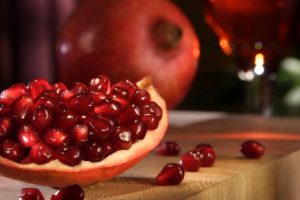Ways to Boost Immunity this Winter
There is a theory of immunity in AyurVeda called the beej-bhumi theory, which means ‘seed and land’. In this case, the body is analogous to the land and infections, or ‘bugs’, are like seeds. If the body is filled with ama (toxins) and lacking in ojas (the finest product of digestion), the infection will find it to be fertile ground for spreading, just as land that is fertile will sprout many seeds. If digestion is strong, and ojas rather than ama predominates in the body, then the seeds of infection will not be able to take hold, just as seeds will not take root in land that is infertile.
Everyone is more susceptible to respiratory problems when the seasons are changing, such as in the Autumn and early spring. This is because the body functions differently in each season, and in the transition between the hot and cold seasons the agni, or digestive fire, can start to fluctuate dramatically. If you do not adjust your diet and routine and follow the AyurVedic guidelines for the seasonal transitions, you can build up ama. Once the body is fertile for disease, it is easy for a cold or flu to sprout, as in the seed and land theory mentioned earlier.
That is why respiratory illnesses and allergies abound in the autumn and early spring. In the early spring, there is an added factor because ama accumulated during the winter starts to melt, flooding the micro-channels and overloading the immune system. The body’s immune system is weakened and becomes a fertile ground for bacteria and allergens.
Diet
If you feel less hungry at mealtimes than usual, or if you feel heavy and dull in the two hours immediately after a meal, these are indications that your digestive fire is burning low. To help enhance your agni, add pomegranate chutney as a condiment for your meal.

Pomegranate chutney can help to enhance agni
Cooking your food with immune-enhancing spices such as cumin, fennel, coriander, turmeric, gingers, and black pepper is also an important way to enhance agni and reduce ama.
It’s important to always avoid the factors that cause ama to accumulate in any season. Stay away from leftovers, processed foods, ice-cold foods and drinks, and heavy foods (such as fried foods). Vegetables from the nightshade family (potatoes, tomatoes, aubergines, and sweet peppers) should also be avoided, as these create ama.
Gentle purification and balancing through Maharishi AyurVeda Panchakarma
Maharishi AyurVeda recommends that you do the gentle purification treatments called Panchakarma during these transitions between the seasons, in the autumn and the early spring. Maharishi Panchakarma includes a full program of AyurVedic massage, steam baths, and intestinal cleansing treatments, to rid your body of ama accumulated during the previous season. Panchakarma also strengthens your agni, or digestive fire, so more ama won’t be accumulated.

Maharishi AyurVeda Panchakarma treatment
Panchakarma treatments should be performed under the supervision of an AyurVedic physician. But if you can’t go to a Maharishi Ayurveda Health Center for internal cleansing, you can still follow an AyurVedic regimen at home to cleanse the body of ama during the transition between the seasons. For instance, you can eat warm, light, nourishing foods such as soups, or light meals of mildly-spiced vegetables with grains such as quinoa, couscous, and millet. Eating a lighter diet for a few weeks while the weather is changing will help burn away ama rather than accumulate it. Also, be careful to get proper rest, drink plenty of warm fluids, and take daily walks or do other exercise that is suitable for your body type.
For information on our consultations click here or to view our full range of treatments available click here.
Contact us by sending an email to enquiries@ayurveda-rendlesham.co.uk.

